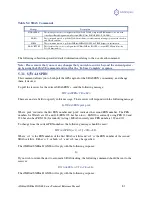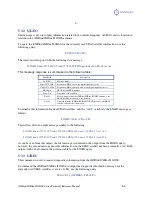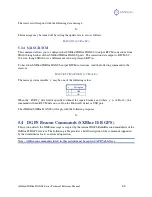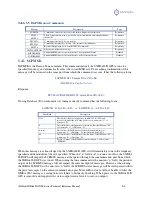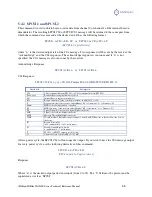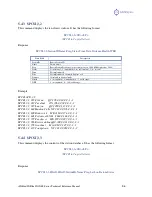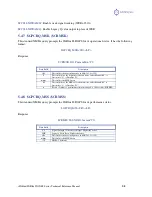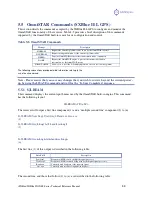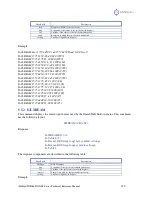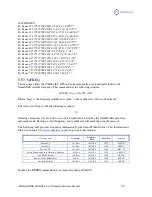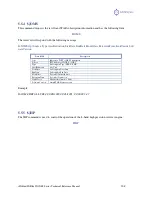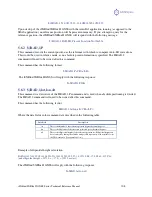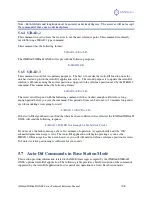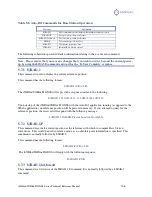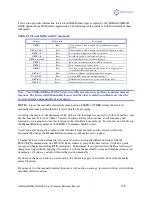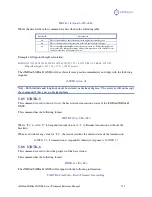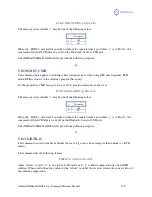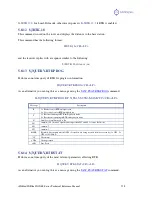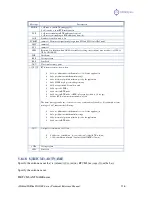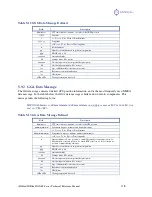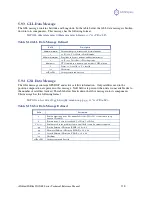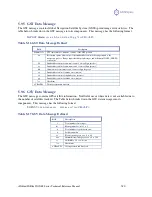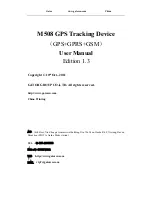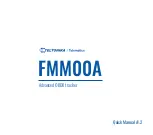
iSXblue/SXBlue II GNSS Series Technical Reference Manual
105
Note - Both latitude and longitude must be entered as decimal degrees. The receiver will not accept
the command if there are no decimal places.
5.6.4
$JRAD,2
This command is used to force the receiver to use the new reference point. This command is normally
used following a $JRAD,1 type command.
This command has the following format:
$JRAD,2<CR><LF>
The iSXBlue/SXBlue II GNSS will reply with the following response:
$>JRAD,2,OK
5.6.5
$JRAD,3
This command is used for two primary purposes. The first is to invoke the Auto-Dif function once the
unit has started up (with the Auto-Dif application active). The second purpose is to update the Auto-Dif
solution (calibration) using the current position as opposed to the reference position used by the $JRAD,2
command. This command has the following format:
$JRAD,3<CR><LF>
The receiver will respond with the following command if it has tracked enough satellites for a long
enough period before you sent the command. This period of time can be from 3 to 10 minutes long and is
used for modeling errors going forward.
$>JRAD,3,OK<CR><LF>
If the Auto-Dif algorithms do not find that there has been sufficient data collected, the iSXBlue/SXBlue II
GNSS will send the following response:
$>JRAD,3,FAILED,Not Enough Stable Satellite Tracks
If you receive the failure message after a few minutes of operation, try again shortly until the ‘OK’
acknowledgement message is sent. The Auto-Dif application will begin operating as soon as the
$JRAD,3,OK message has been sent, however, you will still need to define a reference position for Auto-
Dif, unless relative positioning is sufficient for your needs.
5.7
Auto-Dif Commands in Base Station Mode
This section provides information related to the NMEA messages accepted by the iSXBlue/SXBlue II
GNSS’ optional Auto-Dif application. The following table provides a brief description of the commands
supported by the Auto-Dif application for its control and operation in a fixed Base Station mode.

